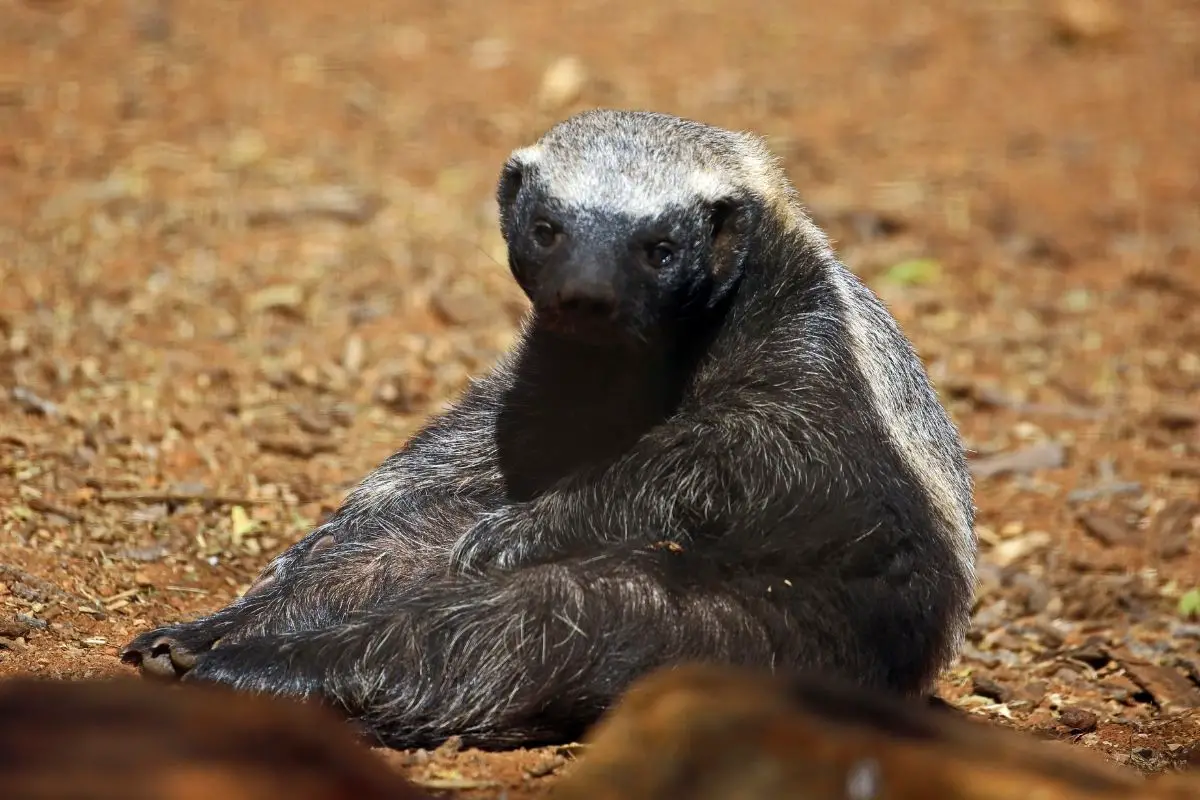
The honey badger is an animal native to sub-Saharan Africa, the Middle East, and India. Its name can fool you. It is not as sweet as its name sounds; this small, stocky mammal is a fierce, aggressive little creature. The World Almanac considers the Honey Badger the meanest animal in the world.
What Do Honey Badgers Look Like?
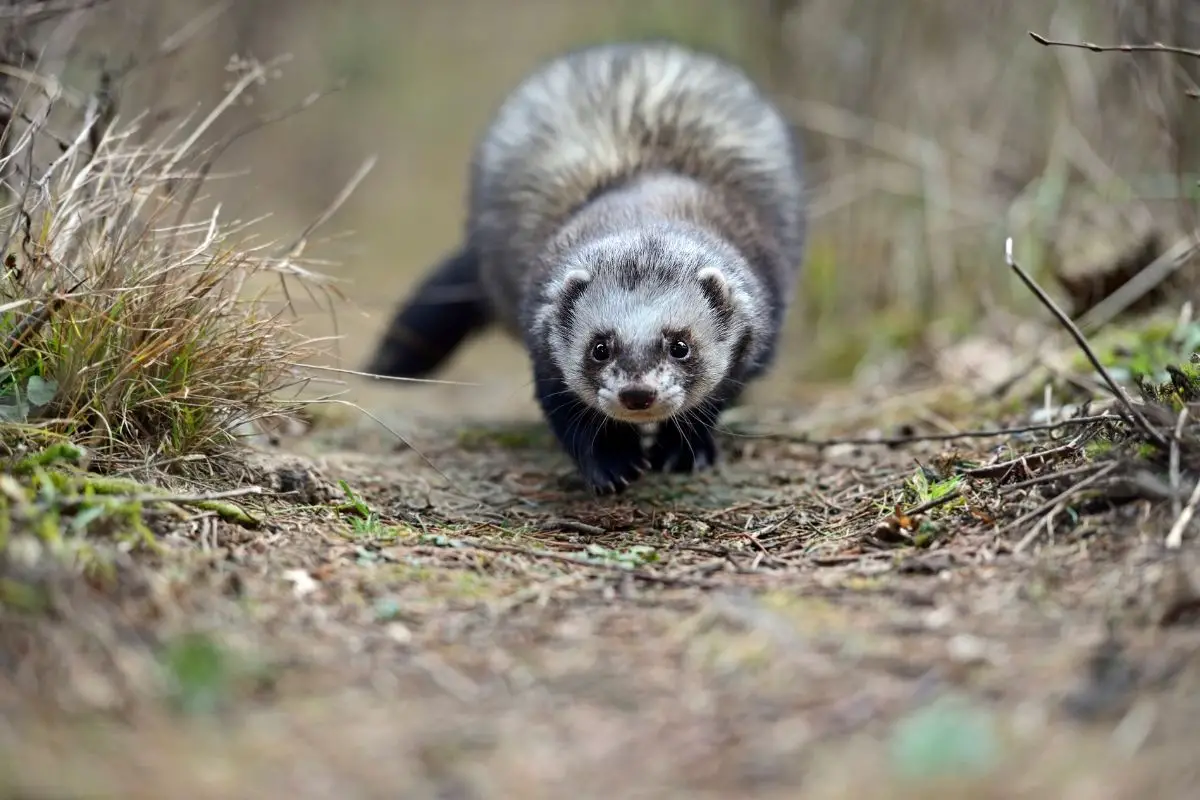
The Honey Badger belongs to the weasel family and is related to skunks, otters, other badgers, and ferrets. Though not a big animal, it has a stocky, flattened appearance. It has small eyes, with poor vision, short ears that hear well, and a keen sense of smell.
It has long claws on its front feet that it uses for digging and foraging for food. It has thick, coarse hair that is black and has a broad white to grey stripe that runs down its back from the top of its head to the tip of its tail. The skin hangs relatively loose on its body, allowing the mammal to turn and move freely within it.
The neck is 6 millimeters thick, making it difficult for anything to get through, and with its loose skin makes it easy for him to turn quickly and bite a predator. Similar to its relative, the skunk, the Honey Badger has a smell, not like honey but stinky like the skunk. The scent comes from a gland at the base of its tail; though not as lingering as the skunk’s smell, it gets the message across to leave him alone when he releases the awful smell.
How Big are Honey Badgers?
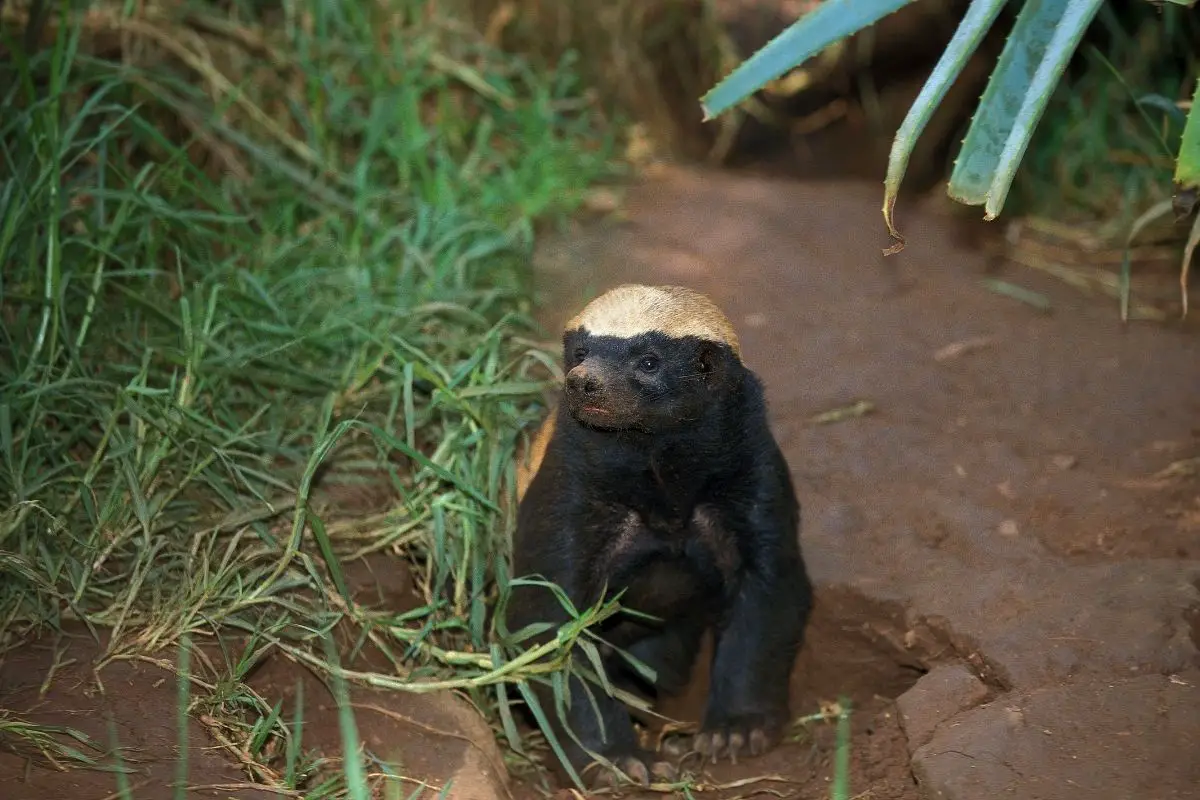
The Honey Badger is a solitary animal spending most of its life alone foraging for food. Only about the size of a small to medium-sized dog. Though don’t let their size fool you, because the bite of a honey badger is strong and the long front claws intense, making them quite fierce.
Even more interesting is the size of the honey badger’s brain, and it is large compared to other mammals its size. This mammal is considered intelligent because it is one of the few non-primate species found to use tools. They have been found to use their claws to pry open food, manufactured beehives, and even gates.
The male honey badger weighs about 20-35 pounds and measures 9.1 to 11 inches tall at his shoulder. The body is about 22 to 30 inches, with the tail adding another 4.7 to 11.8 inches. They are broader with more domed heads, fuller cheeks, and thicker necks than the female Honey Badger.
How Big is the Female Honey Badger?
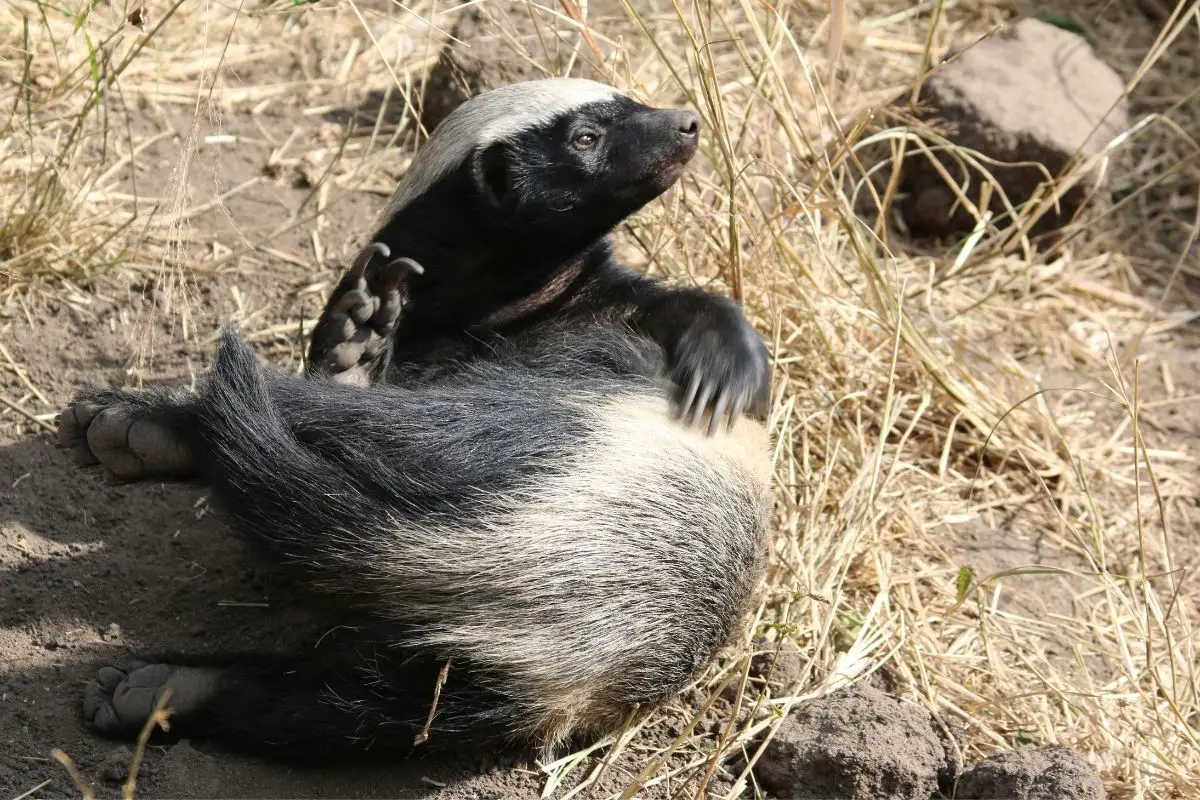
Females are about two-thirds the size of a male, so they are notably more petite than their male counterparts. She is also a solitary animal other than during the mating season, which is May, or when she has cubs. She is very protective of her cubs and is even known to kill foxes if she feels they are a threat to her offspring.
During the mating season, she will travel and mate with the male. The male and female have also been spotted hunting together during this season. Once they have mated, the pair separates as they are not monogamous, and the male has no part in raising the offspring.
How Big are Baby Honey Badgers when They are Born?
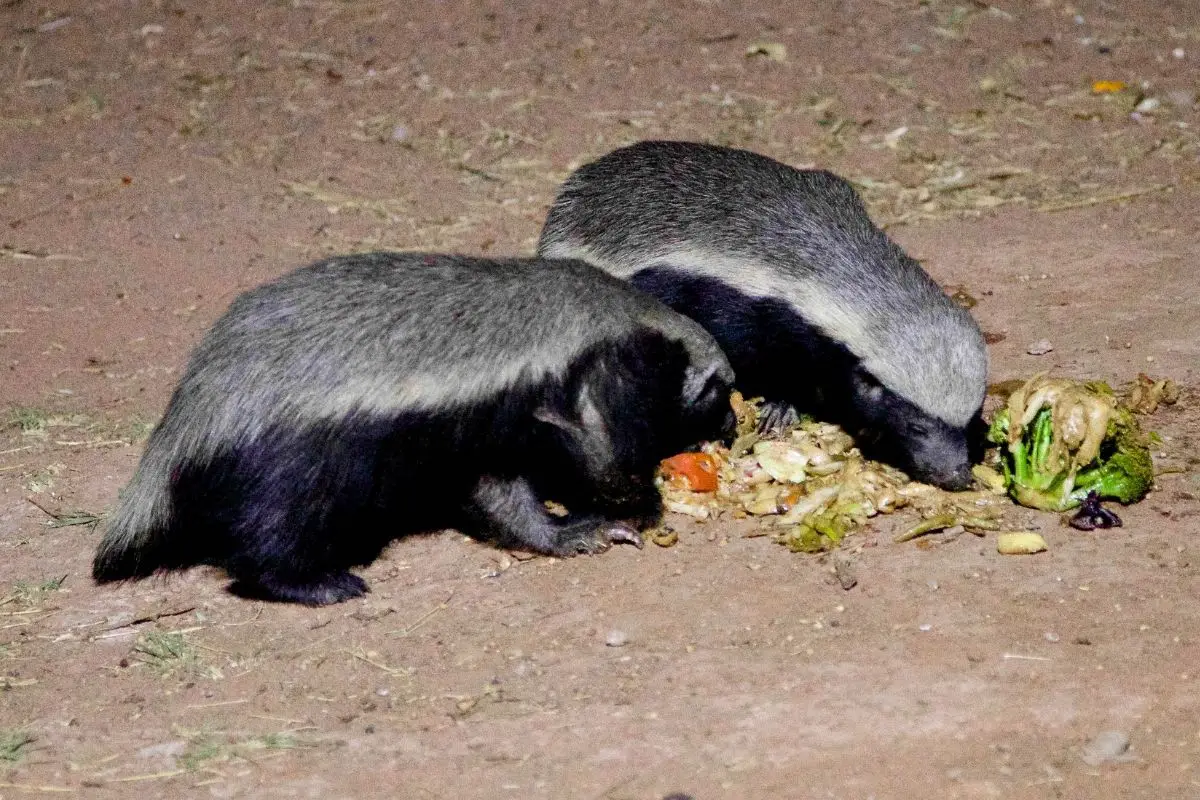
The female, an expectant mother, digs a hole and lines it with grass for her tiny baby, and after about seven to ten weeks of gestation, one cub is born. A female rarely gives birth to two cubs. A pink, blind, and hairless cub are only 12 cm long (5.5 inches long) with a 3 to 4 cm tail.
By the time the cub is three months old, it is the perfect miniature of the parent, and by the time they are six months, they are full-grown, though they remain dependent on their mother for about one year before they go on their own. The first year of life is rough for a cub, and only about one-half of those born make it to their first year. Even though the female works hard to protect her cubs, it remains at times a very difficult job.
They die in multiple ways, such as starvation, weather, disease, predators, and even road traffic accidents.
What Do Honey Badgers Eat?
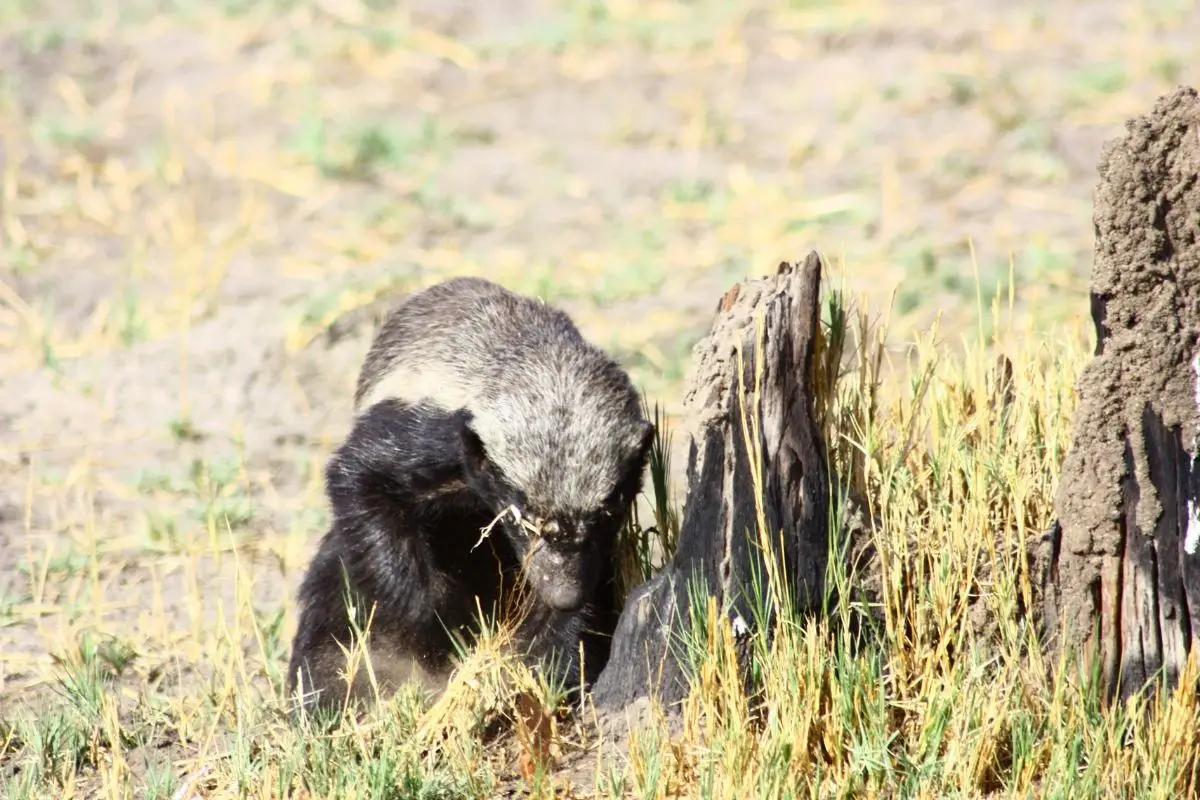
Honey Badgers get their name from their favorite food, honey or honey larvae, and their thick-skinned coat makes the bee sting a challenge for the bees. They will go to great lengths to find their favorite food, even destroying domesticated beehives. The beekeeper considers the honey badger a pest.
Honey badgers are omnivores – that means they enjoy a diet that consists of both animals and plant foods. The honey badgers enjoy various foods, from birds, reptiles, rodents to berries, roots, and fruits. The honey badger has a great sense of smell and can find food deep under the ground, and its strong claws can rapidly dig down to get the desired meal.
Their claws also make them great hunters, and they can quickly shred the selected meals. They have even been known to go after poisonous reptiles like cobra snakes or insects such as scorpions. They are sometimes bitten but are only knocked out for a couple of hours and then return to their dinner if it is still there.
Something that has piqued a definite interest in scientists as they study the Honey Badger. The honey badger uses its keen sense of smell and foraging for most meals, and they have been found to dig 50 holes for a single period of eating or foraging.
Can A Honey Badger Hurt a Human?
Honey Badger does not implicate kindness, only its desire to eat honey. Honey Badgers tend to be solitary animals and will avoid a human or another animal. They are generally not aggressive towards people.
Beware, though, if you should come up rapidly on a Honey Badger or intentionally corner and go at a Honey Badger, they will not back down. With its strong jaw, tough bite, and intense front claws, the Honey Badger will injure you. If you decide you want to observe a Honey Badger, do so at night and be quiet, remaining at a distance.
Using binoculars or a telephoto lens will allow you to visualize this creature.
Can a Honey Badger Hurt a Pet?
Even though the Honey Badger is the same size as a medium-sized dog, even a large dog would not fair well with this aggressive animal. The Honey Badger would avoid the curious dog or cat as with humans. If it does not have a choice, a Honey Badger will defend itself and its cubs.
The curious animal will be injured or killed and eaten by the Honey Badger. So, if you have a loved pet, it is best to keep it away from the Honey Badger. Just remember though their names sound sweet, Honey Badger, they are not.
This animal is only the size of a medium-sized dog. It is aggressive and can be the meanest animal in the world. So don’t let their name and their size fool you.
Sources:



